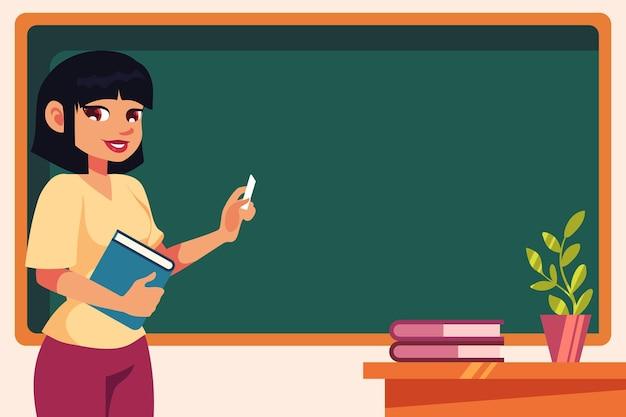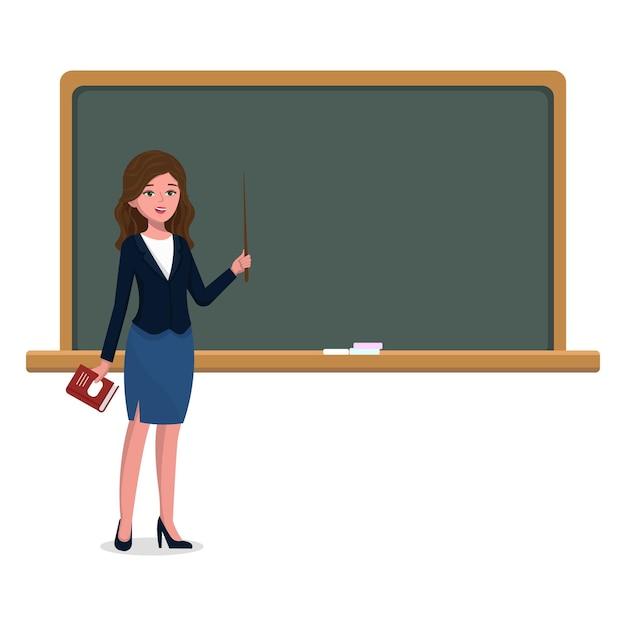Education is constantly evolving, and with each passing year, we witness significant changes in the field of teaching. As we find ourselves in the year 2023, it’s vital to reflect upon the transformation of educators and the impact it has on our classrooms. The differences between present and past teachers go beyond their appearances or technological prowess. They encapsulate various pedagogical approaches, curriculum design, and the overall dynamics of teaching.
One might wonder, “Is active learning a pedagogy?” Or perhaps, “What are the different teaching pedagogies?” These questions lead us to explore the contrasting philosophies that define present and past teachers. Furthermore, we delve into the characteristics of a good curriculum and ponder the real-life examples of effective pedagogical practices. Join us as we analyze the evolution of teaching and shed light on the distinctiveness of present and past teachers in the ever-changing educational landscape.

What’s the Deal with Present and Past Teachers?
We all remember our school days and the teachers who shaped our education. But have you ever wondered how teaching has changed over the years? In this article, we’ll explore the differences between present and past teachers, from their teaching methods to their classroom dynamics. So, grab your backpack and let’s dive into the fascinating world of education!
1. Technology Takes Center Stage 📱
In the past, teachers relied on blackboards and chalk for their lessons. But in the present, classrooms have transformed into high-tech hubs filled with interactive whiteboards, tablets, and projectors. It’s like the teachers have become tech wizards, keeping students engaged with multimedia presentations and online resources. Gone are the days when a dusty blackboard was the pinnacle of educational technology.
2. Information Overload: Internet vs. Encyclopedias 🌐
Back in the day, students would trudge to the library for information and flip through encyclopedias to complete assignments. But today, the internet has become the ultimate knowledge bank. Students can simply Google any query and find a multitude of sources at their fingertips. While this instant access to information is convenient, it also means that present-day teachers need to focus more on teaching critical thinking skills rather than simply dispensing facts.
3. Break the Silence, Speak Up! 🗣
Do you remember the eerie silence that filled classrooms of the past? Students would sit quietly, fearing the wrath of the strict teacher. But now, present-day teachers foster an environment that encourages active participation and student engagement. They stimulate discussions, ask thought-provoking questions, and promote collaboration among students. It’s no longer about sitting passively; it’s about speaking up and sharing ideas.
4. Bye-bye Boring Lectures, Hello Interactive Learning 🎓
The days of long, monotonous lectures are gone. Present-day teachers understand the importance of making learning fun and interactive. They utilize games, group activities, and hands-on experiments to bring lessons to life. Education has become experiential, ensuring that students actively participate and retain information. So, get ready to roll up your sleeves and dive into the exciting world of interactive learning!
5. Teachers as Mentors 👩🏫🧑🏫
In the past, the teacher-student relationship was often distant and formal. Teachers were seen as authority figures rather than mentors. However, present-day teachers strive to build stronger connections with their students. They act as mentors, offering guidance, support, and personalized attention. They understand the importance of fostering emotional well-being and creating a safe space for students to thrive academically and personally.
Wrapping Up
Teaching has come a long way since the days of dusty chalkboards and encyclopedias. Present-day teachers embrace technology, encourage student participation, and prioritize interactive learning. They act as mentors rather than mere gatekeepers of knowledge. So, whether you’re reflecting on your own school days or observing the current educational landscape, remember that teaching is an ever-evolving art form that shapes the minds of future generations.

FAQ: Present vs. Past Teachers
Is Active Learning a Pedagogy
Active learning is indeed a pedagogy that has gained significant traction in modern education. Unlike the traditional passive teaching methods where students are simply passive recipients of information, active learning encourages student engagement and participation. It involves interactive activities, group discussions, problem-solving tasks, and hands-on experiences. So, wave goodbye to boring lectures and say hello to a classroom buzzing with energy!
What Sets Present Teachers Apart from Their Predecessors
Ah, the great divide between present and past teachers! While both groups are dedicated to shaping young minds, present teachers have the advantage of adapting to the ever-changing educational landscape. They are tech-savvy individuals who understand the importance of integrating technology into their teaching methodologies. With the vast array of digital tools and resources at their disposal, present teachers can create dynamic and interactive learning experiences that keep students captivated and excited about learning.
Can You Provide an Example of Pedagogy
Certainly! Let’s take an example to illustrate the concept of pedagogy. Imagine you’re learning how to ride a bicycle. In the past, you might have had a teacher who simply explained the mechanics of balancing and pedaling, while you sat and listened attentively. However, in the present, a teacher utilizing a pedagogical approach would encourage you to hop on the bike, provide guidance, and let you learn through trial and error. This hands-on experience and active participation form the foundation of pedagogy.
What Are the Characteristics of a Good Curriculum
A good curriculum is like a well-crafted recipe for a delicious educational feast. It should be well-balanced, nourishing, and leave students hungry for more knowledge. Here are some key characteristics to look for in a good curriculum:
Relevance:
A good curriculum is relevant to the real world and addresses current societal needs and trends. It prepares students with skills and knowledge that are applicable beyond the confines of the classroom.
Flexibility:
A good curriculum allows for flexibility and customization. It caters to the unique learning needs, abilities, and interests of individual students. After all, one size does not fit all!
Engagement:
A good curriculum is designed to engage students actively. It incorporates interactive activities, creative projects, and real-world challenges that capture students’ interests and fuel their learning enthusiasm.
Progression:
A good curriculum follows a logical progression, building upon previously acquired knowledge and skills. It facilitates a smooth transition from one level of learning to the next, creating a solid educational foundation.
What Are the Different Teaching Pedagogies
Ah, the vast sea of teaching pedagogies! Here are a few popular ones:
1. Collaborative Learning:
This pedagogy focuses on group work and cooperation. Students engage in discussions, share ideas, and learn from each other’s perspectives.
2. Problem-Based Learning:
This pedagogy puts the spotlight on real-world problems. Students actively seek solutions, employ critical thinking, and learn through hands-on problem-solving experiences.
3. Flipped Classroom:
In this pedagogy, traditional roles are reversed. Students acquire the necessary knowledge outside the classroom through pre-recorded lectures or online resources. Classroom time is then utilized for interactive discussions, clarification, and application of concepts.
4. Project-Based Learning:
With project-based learning, students dive into in-depth projects that require research, collaboration, and presentation skills. It allows for creativity, experiential learning, and the application of knowledge to real-life scenarios.
5. Inquiry-Based Learning:
Inquiry-based learning sparks curiosity and encourages students to ask thought-provoking questions. Through investigations, hands-on experiments, and research, they explore topics deeply, developing critical thinking and problem-solving skills.
Now that you’re familiar with these teaching pedagogies, you’ll realize that there is no one-size-fits-all approach. A skilled teacher blends different pedagogies to create a dynamic and engaging learning environment tailored to their students’ needs.
Remember, education is ever-evolving, and present teachers are at the forefront, embracing new methodologies, and adapting to changing times. By incorporating active learning, utilizing technology, and understanding the power of pedagogy, present teachers are shaping a brighter future for their students. So, let’s celebrate their tireless efforts and the incredible impact they have on the minds of tomorrow.
